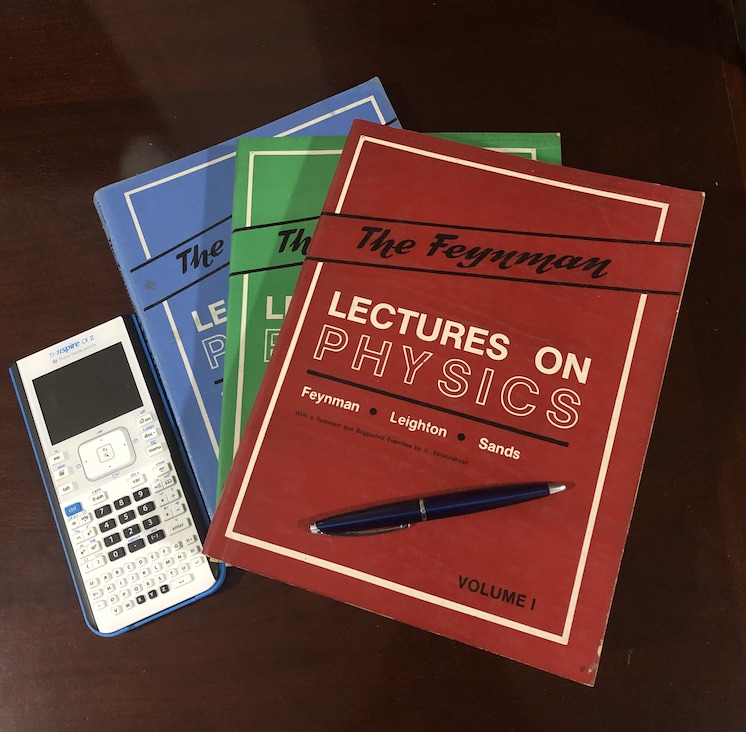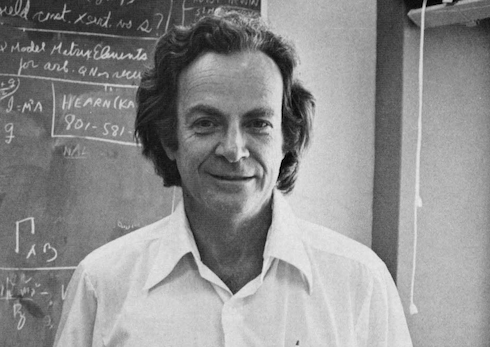What makes this book so special? The answer to this question lies in Prof. Feynman himself and his unique approach to teaching – teaching as an endeavor to nurture a wonder for nature and developing an intuition about her ways.

It was more than three decades ago. Three of us, undergrad Engineering students, won a prize for an Engineering Expo project where we built a working model of the Maglev (Magnetic Levitation) train. The prize money was divided among the three of us. Being the first ever ’handsome’ sum of money I had earned myself, I wanted to buy something special with it. I went for advice to one of my mentor teachers and he said without even thinking – “buy a copy of The Feynman Lectures”. Though I ended up buying a personal copy a year or so later, I had started reading and following the 3-volume text from that day.
‘The Lectures’ is often called the Bible of Physics. As for me, this would probably be the one book that I would have read or referred to the most number of times in my life.
(Note: The title image above shows the latest photo of my copy of the book that I bought more than 30 years back. Please don’t doubt my story looking at their relatively good condition – I have been extremely delicate when it comes to handling them :-))
Richard Feynman is an American Physicist – probably more famous for his brilliant teaching than the Nobel Prize he had won. He is the perfect embodiment of what an ideal teacher and an ideal Scientist could mean. He was such a legend that there are so many stories and fables about his life (Note: we plan to dedicate another entire future article on this).

Prof Feynman had taught entry level Physics for undergraduate students at Caltech (California Institute of Technology) and this book is based on those lectures. The book covers all the basic topics of Physics, which have been more or less static for decades. With so many textbooks written on those topics over years, one may wonder what makes this book so special?
I think the answer to the above question lies in Prof. Feynman himself and his unique approach to teaching – teaching as an endeavor to nurture a wonder for nature and developing an intuition about her ways.
An attribute of a good teacher is said to be the ability to put oneself in the students’ shoes, explore the doubts and the dilemmas they may face and address them directly. Feynman does that so naturally and spectacularly. For those of us who were not fortunate enough to be in those classes, the Lectures bears testimony to that.
Unlike most senior and celebrated professors, Feynman invested much time in planning, designing and delivering these junior-level courses. In the foreword to the book, he talks extensively about his thinking and preparations and the challenges he dealt with in preparing for these courses and teaching them.
In this endeavor, Feynman also connects together apparently disconnected phenomena that share the same underlying ‘models’ – thus uncovering new insights and revelations about the ways of nature. This proves to be a perfect antidote to the extreme compartmentalization of ideas into disciplines that has left us narrow in our perspectives and blind to the big picture.
Of course, many videos of lectures and interviews with Richard Feynman are available online now. So there are many more avenues to understand and appreciate his lectures and teaching.
Still, that legendary mind’s thinking has been best captured in these three volumes. That is why every time one opens them, one still feels him.
Sankar is the founder and CEO of Silver Pi.
He had worked in Banking and Technology for about three decades before switching to Education. He is an Electrical Engineer by training, with a career in Technology and Banking across Japan, USA, Singapore and India.


11 comments